Brandenburg and Berlin Way
Posted on November 28, 2021 by Royal Rosamond Press
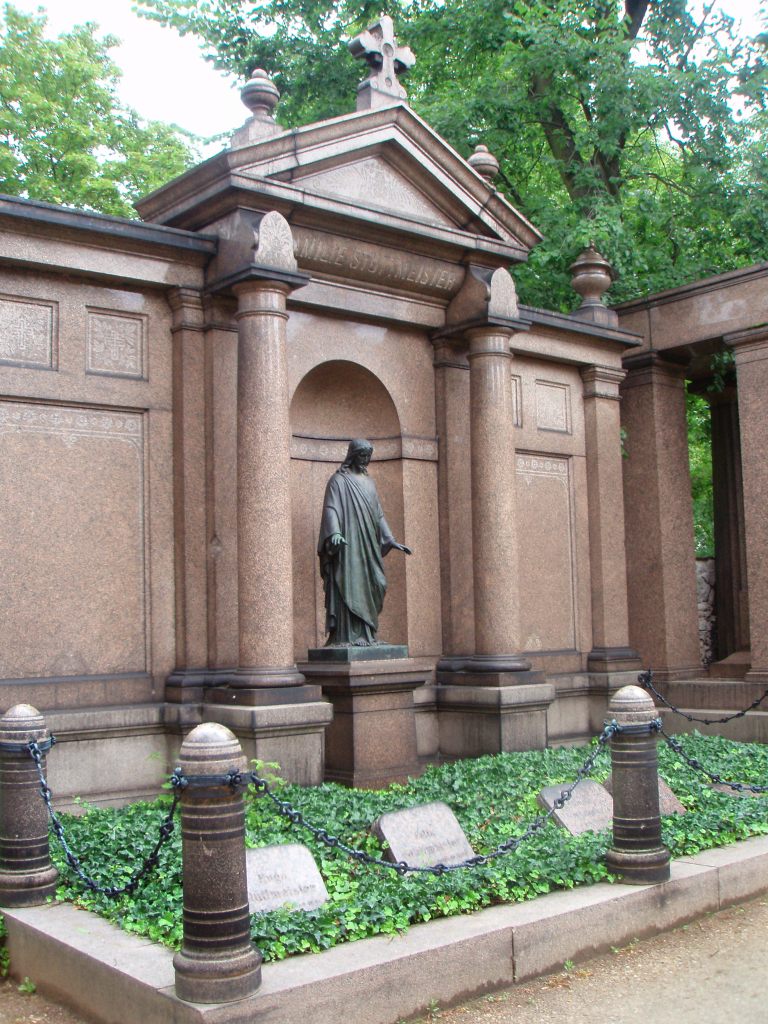
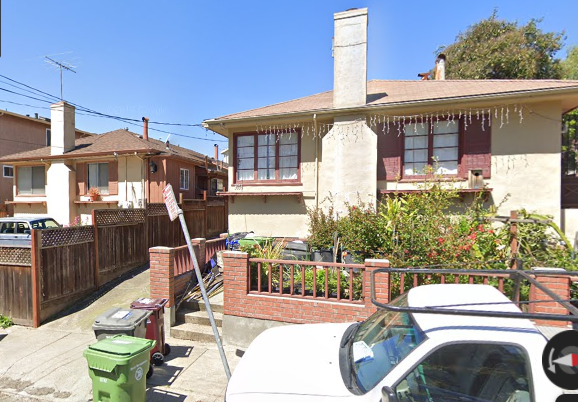
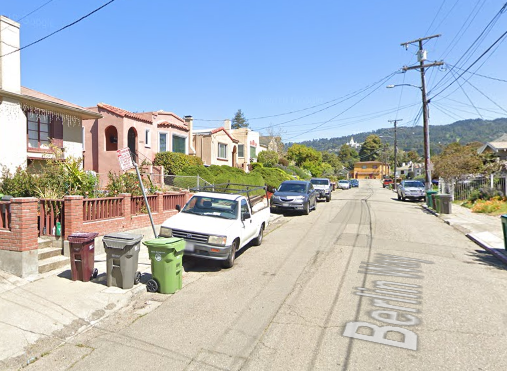
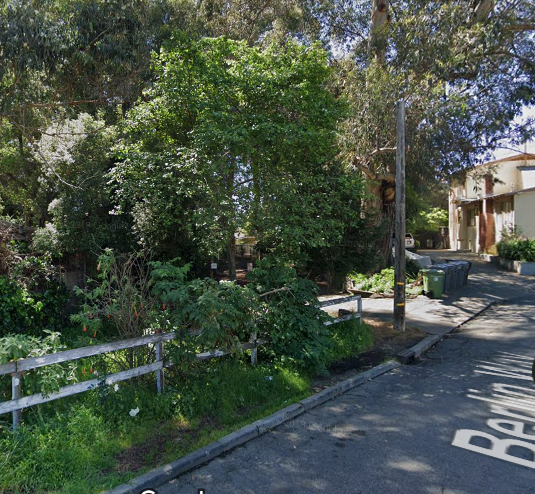
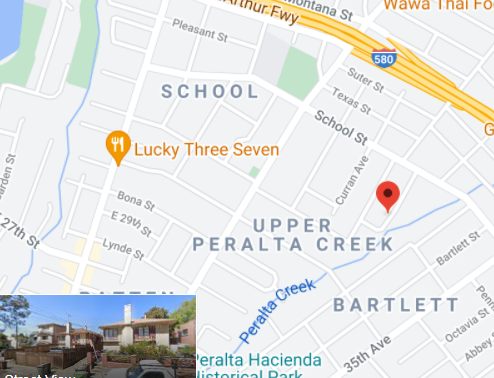
My German ancestors lived in Berlin. I was born on Berlin Way.
My father admitted we had Jewish blood, but misled me. He wore a Stuttmeister cote of arms for awhile. I was brought home to Berlin Way after I was born. For sure Hitler was looking for this Military Banking family that were the center of Berlin-Austrian culture. Did a rival employ Hitler ‘The Austrian Painter’ as a patsy? It was dangerous being this Jewish family that straddled many noble fences – and led armies against Gentiles. Were the Soviets out to destroy…..us? Am I…..the real Priory de Sion? Does the IDF study our military tactics?
Baron John Presco
Von Montgelas, who had initially supported National Socialism, was an outspoken critic of the Nazi dictatorship, particularly regarding their treatment of women. She was particularly affected by the deportation of her friend Alice Salomon, a Jewish woman who was expelled from Germany.[2] She firmly rejected government requests to join the Nazi Party and the League of German Girls, which resulted in her being blackmailed. She was accused of being of Jewish birth since her paternal uncle, Count Franz von Wimpffen, was married to a Jewish convert to Catholicism, Baroness Maria Anna Cecilia Bernhardine von Eskeles.
Fanny Arnstein was born in Berlin, the daughter of Daniel Itzig. She was a member of the extensive and influential Jewish Itzig family.
She married the banker Nathan Adam von Arnstein, a partner in the firm of Arnstein and Eskeles; her sister Caecilie (Zipperche) was married to the other partner, Bernhard von Eskeles. They brought the social influences of Berlin, notably the concept of the intellectual salon, to the Vienna of Joseph II. The Arnstein mansion at Vienna and her villas at Schönbrunn and Baden bei Wien were regularly used for hospitality. She was also involved in charitable works.
During the Vienna Congress the Arnstein salon was frequented by celebrities including Wellington, Talleyrand, Hardenberg, Rahel Varnhagen and her husband, the Schlegels, Justinus Kerner, Karoline Pichler, and Zacharias Werner. She was one of the founders of the Gesellschaft der Musikfreunde and was herself a skilled musician.
In 1814, Fanny von Arnstein introduced a new custom from Berlin, hitherto unknown in Vienna: the Christmas tree.[1]
Her only daughter, Henrietta, Baroness Pereira-Arnstein, was also a skilled musician and a regular correspondent of her cousin, Lea Salomon, wife of Abraham Mendelssohn and mother of Felix and Fanny Mendelssohn (who was named after Fanny Arnstein).
See also
Bishop Leontius (secular name Vladimir Fyodorovich von Wimpffen, Russian: Владимир Фёдорович фон Вимпфен, born Baron Leopold von Wimpffen; 18 May 1873 – 6 June 1919) was a bishop of the Russian Orthodox Church, auxiliary bishop of Yenotayevka.

Biography
Leontius was from a distinguished noble family, the Wimpffen. His father, Baron Theodore von Wimpffen, was a German citizen. His Mother, Lyubov Voyeikova, belonged to the families of the Moscow noblemen.[citation needed]
He was baptized in the Lutheran Church with the name of Leopold and in conscious age, influenced by his mother converted to Orthodoxy and took name Vladimir.[citation needed]
On 28 September 1914, was ordained bishop of Cheboksary, vicar of Kazan diocese.[citation needed]
From 12 February 1915, was Bishop of Yerevan (Armenia), vicar of the Georgian exarchate.[citation needed]
From 24 March 1916, was Bishop of Kustanai, vicar Orenburg diocese.[citation needed]
From 16 December 1916 he became Bishop of Petrovsk, vicar of Saratov diocese.[citation needed]
Came into conflict with the ruling bishop Palladius (Dobronravov). May 5, 1917 was dismissed with the appointment of his seat in the Astrakhan Pokrovo-Boldinsky monastery.[citation needed]
From 5 September 1917, was Bishop of Enotaevka, vicar of Diocese of Astrakhan.[citation needed]
On 26 September 1918 Bishop Leontius was retired.[citation needed]
On 7 June 1919, by order of Sergey Kirov, he was arrested and charged (along with Archbishop Mitrophan of Astrakhan) with organization of the White Guard conspiracy.[citation needed] Shot 23 June 1919 in one day with Archbishop Mitrophan. It is known that they met before the execution. Bishops, in the face of impending death, forgot all his previous wrongs, asked each other for forgiveness, bowed to each other to the ground and embraced. They were thrown into a hole, and refused a burial.[1]

Similar
Franz Emil Lorenz Heeremann Graf von Wimpffen (2 April 1797 – 26 November 1870) was an Austrian General and Admiral who served as Administrative Head of the Austro-Hungarian Navy from 1851 to 1854.
| GeneralfeldmarschallFranz Graf von Wimpffen | |
|---|---|
| Wimpffen photographed by Ludwig Angerer (1860) | |
| Statthalter of the Austrian Littoral | |
| In office 1850–1854 | |
| Appointed by | Franz Joseph I |
| Preceded by | Johann von Grimschitz |
| Succeeded by | Eduard von Bach |
| Rector of Milan | |
| In office 3 August 1848 – 6 January 1849 | |
| Appointed by | Franz Joseph I |
| Preceded by | Gabrio Casati |
| Succeeded by | Antonio Pestalozza |
| Personal details | |
| Born | 2 April 1797 Prague, Bohemia, Austria |
| Died | 26 November 1870 (aged 73) Gorizia, Istria, Austria-Hungary |
| Spouse | Marianne von Eskeles(m. 1825; died 1862) |
| Children | Heinrich Franz Viktor Agidius Maria |
| Profession | Military officer |
| Military service | |
| Allegiance | |
| Branch/service | |
| Years of service | 1813–1870 |
| Rank | Second lieutenant Major general Field marshal Admiral (navy) |
| Unit | Trieste Brigade 1st Austrian Army |
| Battles/wars | Coalition Wars Italian War of 1848 Italian War 1859 |
Contents
Military career
Franz von Wimpffen was born in Prague on 2 April 1797, the son of Karl Franz Eduard von Wimpffen (1776–1842), who served as Chief of the Austro-Hungarian General Staff (from 1824 to 1830), and his wife, Princess Victoria von Anhalt-Bernburg-Schaumburg-Hoym (1772-1817), widow of Landgrave Karl of Hesse-Philippsthal (1757-1793). He was the owner of Kainberg, Reitenau and Eichberg castles and estates in Austria and, as a Roman Catholic, was a Knight of the Sovereign Military Order of Malta. He was commissioned Unterleutnant in October 1813 and served as an artillery officer during the last three years of the Napoleonic Wars, in the German campaign of 1813, the French campaign of 1814, and the Neapolitan War in 1815.
Promoted Generalmajor in 1838, he was given command of a brigade in Trieste. Von Wimpffen was made commander of a division of II Army Corps in Italy in 1846 with the rank of Feldmarschall-leutnant (Lieutenant-Field-Marshal in the Imperial and Royal Austrian Army). He distinguished himself in the 1848 campaign at Vicenza and Custoza. Later, in the Papal States he compelled by bombardment the surrender of Bologna and Ancona. In October 1849 von Wimpffen was named Civil and Military Governor of Trieste and Governor of the Küstenland (Coastal Lands), the region that included the Istrian Peninsula, with the rank of Feldzeugmeister (General of the Artillery in the Austrian Army).
Upon the resignation of Hans Birch Dahlerup in August 1851, von Wimpffen was named his successor as Oberkommandant der Marine (‘High Commander of the Navy’ or Provisional Commander-in-Chief of the Imperial and Royal Navy). During his tenure, the development of the naval base of Pola was accelerated and the naval school at Fiume now Rijeka (Croatia) was converted into the Austrian Naval Academy.
In September 1854, von Wimpffen was dismissed as Oberkommandant der Marine by Emperor Franz Josef against the advice of his military advisers. Von Wimpffen instead took command of I Army Corps. He was succeeded as Head of the Navy by Archduke Ferdinand Maximilian of Austria, the younger brother of Franz Josef.
However well he had performed as Administrative Head of the Navy, von Wimpffen was known in military circles as “the General who had never won a battle”. In the Second Italian War of Independence in 1859, after the defeat at Magenta on 4 June, he seconded the decision of Gyulai, the Austrian commander, to retreat across the Mincio to Mantua, leaving Milan and all of Lombardy to the Sardinians and French. Gyulai was dismissed on 16 June by Franz Josef, who assumed command of the field army with von Wimpffen in command of the Cavalry.
At Solferino (24 June 1859), von Wimpffen and his men fought valiantly, but the Austrians were defeated. The carnage of the battle was so severe that it was soon followed by an armistice and then peace negotiations.
In 1861 von Wimpffen was retired with the rank of Generalfeldzeugmeister (Field Marshal of the ordnance /Field Marshal of artillery in the Austrian Army) and became an Imperial and Royal Advisor to the Emperor of Austria.
He died on 26 November 1870 at Görz (now Gorizia), and was buried at the crypt of the Eichberg castle chapel, in Austria, together with his wife.
Marriage and children
On 5 October 1825, he married Baroness Maria Anna Marianne Cecilia Bernhardine von Eskeles (1802-1862), who converted from Judaism to Catholicism, in Hietzing, Austria. She was born at the Palais Eskeles, Vienna, Austria, on 2 March 1802, daughter of Bernhard von Eskeles and wife Caecilie (Zipperche) Itzig, from whom she inherited a fortune in stocks and bonds, and died in Munich, Bavaria, on 10 August 1862.
They had :
- Heinrich Emil Graf von Wimpffen (1827-1896), succeeded him as head of the comital house.
- Franz Alphons von Wimpffen (1828-1866), Colonel, killed at the Battle of Náchod.
- Viktor Agidius Christian Gustav Maximillian Graf von Wimpffen (Hietzing, Vienna, Austria, 24 July 1834 – Battaglia Terme, Italy, 22 May 1887), was some time Corvette Captain of the Austro-Hungarian Navy, and Inspector-General of Telegraphs in Austria and married in Vevey, Switzerland, on 11 January 1860 Anasztázia (Anastasia) Barónin Sina de Hódos et Kizdia (Vienna, 8 October 1838 – Vienna, 24 February 1889), of Hungarian, Romanian (Ghica family) and Georgian (Dadiani) descent, by whom he had issue.[citation needed]
- Maria von Wimpffen (1842-1918), married Friedrich Balduin von Gagern, had issue.[1]
See also
- Austro-Hungarian Navy
- http://www.wimpffen.hu/
- https://web.archive.org/web/20110719132951/http://www.wimpffen.dk/
- https://web.archive.org/web/20120304055034/http://www.dresselgenealogy.us/a6.htm
Countess Pauline Mathilde Sophie de Garnerin de la Thuile von Montgelas (née von Wimpffen; 28 February 1874 – 10 May 1961) was an Italian-born German writer, photographer, and Catholic activist. She was a leading figure in the development of the German Catholic Women’s Association and a staunch opponent of Nazism during World War II. Von Montgelas worked extensively in advocating for the rights of women working in domestic service and wrote articles about social responsibility for The Christian Woman.
| Pauline von Montgelas | |
|---|---|
| Full name | Pauline Mathilde Sophie de Garnerin de la Thuile von Montgelas |
| Born | Pauline Mathilde Sophie von Wimpffen 28 February 1874 Rome, Kingdom of Italy |
| Died | 10 May 1961 Rottach-Egern, Germany |
| Noble family | Wimpffen (by birth) Garnerin von Montgelas (by marriage) |
| Spouse(s) | Count Maximilian von Montgelas |
| Father | Count Felix von Wimpffen |
| Mother | Countess Margarethe von Lynar |
| Occupation | Catholic activist, writer, photographer |
Biography
Von Montgelas was born Countess Pauline Mathilde Sophie von Wimpffen on 28 February 1874 in Rome to Countess Margarethe von Lynar and Count Felix von Wimpffen.[1] Since her father was a diplomat, who served as an ambassador of Austria-Hungary, she spent much of her childhood in different European cities including Rome, Berlin, and Paris.[2]
When she was twenty-three years old, she married Count Maximilian von Montgelas. From 1900 to 1903, she lived in Beijing, where her husband worked as a military attaché. While living in China, Von Montgelas traveled extensively around South Asia. In 1906 she published a book, including her own photographic works, on her travels titled Pictures from South Asia.[3][4] Upon moving back to Germany, she and her husband took up residence in Munich, where she became involved in the Marian Girls Protection Association, a lay Catholic organization. Through this organization she met Ellen Ammann, with whom she helped found a Munich-based branch of the German Catholic Women’s Association.[2] Von Montgelas was elected as the second chairperson of the association, taking over management of the social programs which included advocating and caring for waitresses, maids, and other domestic workers. She also founded the Trade Association of Home Workers in Germany, the Catholic Workers’ Association, and the Bavarian Home Industry Association. Her work in the establishment of social courses eventually brought about the development of the Social-Charitable Women’s School. In 1921 she was appointed as the chairperson of the German Catholic Women’s Association’s foreign commission, helping establish Catholic women’s organizations in other countries.
In 1906 Von Montgelas was appointed as honorary president of the Patronage for Young Catholic Workers in the city of Nuremberg.
Von Montgelas, who had initially supported National Socialism, was an outspoken critic of the Nazi dictatorship, particularly regarding their treatment of women. She was particularly affected by the deportation of her friend Alice Salomon, a Jewish woman who was expelled from Germany.[2] She firmly rejected government requests to join the Nazi Party and the League of German Girls, which resulted in her being blackmailed. She was accused of being of Jewish birth since her paternal uncle, Count Franz von Wimpffen, was married to a Jewish convert to Catholicism, Baroness Maria Anna Cecilia Bernhardine von Eskeles.
Von Montgelas is buried in the Montgelas family crypt in Egglkofen.
Fanny Baronin Von Arnstein
November 29, 1758–June 8, 1818

Fanny von Arnstein portrayed in a Kininger mezzotint after Guerin, 1804. Institution: Gidal-Bildarchiv im Salomon Ludwig Steinheim-Bildarchiv für deutsch-jüdische Geshichte e.g., Duisberg
In Brief
Franziska “Fanny” von Arnstein, who rose to the rank of baroness, navigated the artistic and political upheaval of the Napoleonic Era as a hostess of salons that welcomed celebrities. The respect she garnered as a salonnière fostered the growing acceptance of Jews in Viennese high society. During the Napoleonic Wars from 1805 to 1815, von Arnstein aided the sick and wounded and financially backed a rebellion against the French occupying force. At the Congress of Vienna (1814–1815), she brought together intellectuals and politicians in hopes of adding equal rights for Jews to the new constitution for the German Federation, but her allies did not push back when they encountered strong opposition. Exhausted by the war, von Arnstein retired to her counry seat after Napoleon’s defeat.Contents
1
2
3
Work during and after Napoleonic Wars
4
Fanny von Arnstein, patroness of music, arts, and literature, was the outstanding salonnière of her time in Vienna. The high esteem in which she was held contributed much to the growing acceptance of Jews in the high society circles of Vienna.
Early Life
Born in Berlin on November 29, 1758, Vögelchen or Franziska (Fanny) was the eighth child of the banker Daniel Itzig (1723–1799) and his wife Mariane (Mirjam), née Wulff (1727–1788). Fanny’s father, court-financier to King Frederick II of Prussia, was the senior head of the Jewish community there and in 1791 (by a naturalization patent of Frederick William II) gained full civil rights. Growing up in a rich and cultivated household, young Fanny received an excellent education under the influence of Moses Mendelssohn’s reforms and Berlin enlightenment ideals. In 1776 she was married in Berlin to the Viennese banker and merchant Nathan Adam Arnstein or Arnsteiner (1748–1838), the son of Adam Isaac Arnstein(er) (1715–1785) and Sibilla (Bela) Gomperz (d. 1787). He was ennobled in 1795 and made a baron in 1798 for his contributions to Austrian finances; his nephew was the writer Benedict David Arnstein (1765–1841). Nathan Arnstein’s parents may have had some reservations regarding the modern ways of their beautiful daughter-in-law, who discarded the traditional headdress of married Jewish women and tended to dominate her husband. Fanny von Arnstein regarded religion the way Lessing’s parable of the rings had taught her; the idea of conversion did not appeal to her, though she tolerated the conversions of others. From the fact that Anna L. Staudacher has found Arnstein (in the church register of the Viennese Calvinist parish) as a godmother of the niece of an esteemed servant of hers in 1804, we cannot conclude (as Staudacher tends to do) that she was a convert. Accepting a godchild was merely a kind and generous social gesture by Arnstein, without special religious content, because the real godmother was her proxy, i.e., the child’s aunt. Given this context and the fact that Arnstein received a regular burial in the Jewish cemetery, Staudacher’s interpretation must be rejected. Goodness and loyalty, frankness and quick temper were Arnstein’s chief characteristics.
Although Fanny liked Vienna, she remained attached to Prussia and frequently returned to Berlin, where she gave birth to her only child, Judith, later called Henriette (1780–1859), on her twenty-second birthday in 1780. On the same day the old Empress Maria Theresia died in Vienna. Emperor Joseph II (1741–1765–1790), who was on friendly terms with the Arnsteins and seems to have admired brilliant Fanny, was now free to pave the way for some reforms (including religious tolerance). However, even at the turn of the century Jews were still denied many civil rights (e.g. religious community rights and real estate ownership in Vienna).
Life as a Salon Hostess

Encyclopedia: Berlin Salons: Late Eighteenth to Early Twentieth Century
Fanny von Arnstein’s salon developed quickly by the mid-1780s. For a long time the upper classes in Vienna had been cultivating a genuine taste for music. Fanny, a gifted pianist herself, admired Mozart’s genius and attended his subscription concerts. She loved books and reading and spoke several languages, but never became an author or even an assiduous letter writer. Her social talents created a pleasant atmosphere in her salon, where guests from different ranks of aristocratic and bourgeois society met. An album by Joseph Fischer, presented to Fanny by her friends (c. 1793), contains pencil portraits of two dozen members of her circle, among them her intimate friend Carl Prince Liechtenstein (1765–1795). In December 1795 Arnstein became the innocent cause of his tragic death when the prince, quarrelling with another of Arnstein’s admirers about accompanying her to the opera, was killed in the ensuing duel. The town house of the Arnsteins was at the Graben, from 1804 Am Hohen Markt. They also acquired country houses in the Braunhirschengrund on the road to Schönbrunn (Bei den drei Häusern, 1794) and in Baden near Vienna, where they entertained guests in summer. The most intimate glimpses at the family receptions have been preserved by Henriette von Arnstein’s friend Sophie Brentano (1776–1800; sister of the poets Clemens and Bettine), who visited Vienna in 1797–1798. Her letters convey the picture of a lively household, of warm friendship and a literary enthusiasm which embraced Kotzebue as well as Schiller.
At the turn of the century there seems to have been no jour fixe at the Arnsteins’; their house was open every day, apparently even from noon to midnight and after, probably with the exception of the theater-hours. Politicians, diplomats, and publicists were habitués. A good friend was the reform politician and director of the academy Joseph Freiherr von Sonnenfels (c.1733–1817), who had become an influential patron of the arts. Friedrich Gentz (1764–1832) proved a false friend. He had moved from Berlin to Vienna in 1802, became a close adviser to Metternich, and turned anti-Jewish and politically reactionary. Karl August Varnhagen von Ense’s (1785–1858) appreciation and praise of Arnstein was honest, though sometimes intermingled with a few needle-pricks. Among the guests were Horatio Lord Nelson (1758–1805) and his lover Emma Lady Hamilton (c.1765–1815), the composer Johann Friedrich Reichardt (1752–1814), Fanny’s niece Lea Mendelssohn (1777–1842) and her children, the Schopenhauer family, the playwright August von Kotzebue (1761–1819) a,nd the novelist Caroline Pichler (1769–1843). Visiting salonnières from Berlin were Arnstein’s sister Sara Levy (1761–1854), Henriette Herz (1764–1847), and Rahel Levin-Varnhagen (1771–1833).
Around 1800 Fanny von Arnstein’s salon became the center of a cooperating salon network of intellectual and musical women in Vienna. In 1800 Arnstein’s sister Caecilie Wulff (1760–1836) married Nathan von Arnstein’s associate Bernhard von Eskeles (1753–1839), and in 1805 another sister, Rebecca Ephraim (1762–1846), also came to Vienna. Other women belonging to her circle (and keeping literary tea-tables themselves) were Bernhard von Eskeles’ sister Eleonore Flies[s] (1752–1812) and Fanny von Arnstein’s two nieces: the author Regina Frohberg (Rebecca Friedländer; 1783–1850) and her sister Marianne Saaling (1786–1868), both née Salomon; Mariane von Eybenberg, née Meyer (d. 1814) and Dorothea Schlegel (Brendel Mendelssohn, 1764–1839), the wife of the critic Friedrich Schlegel.
In 1802 Arnstein’s daughter married the banker Heinrich (Aaron) Pereira (1773–1835). The couple converted to Catholicism and in 1812 received a barony. Henriette von Pereira-Arnstein, who was an excellent pianist, imitated her mother’s salon on a smaller scale and was a friend of Haydn and Beethoven, Ottilie von Goethe, and the poets Theodor Körner, Franz Grillparzer, and Adalbert Stifter.
Work during and after Napoleonic Wars
From an otherwise enjoyable journey to Paris in 1801 Fanny had returned full of distrust for Bonaparte’s politics. During the Napoleonic Wars (1805–1815) Arnstein and her daughter proved themselves to be true patriots and did much for the sick and wounded soldiers. Andreas Hofer’s uprising in Tyrol (1809) was financially aided by the Arnstein family. Anti-Napoleonic guests (including Mme de Staël in 1808 and 1812) found a warm welcome. Even members of the temporary French occupation forces liked the salon, indulgently smiling about the charming hostess’s political views (or secretly sharing her criticism of Napoleon). Aware of her social responsibility as a wealthy woman, Arnstein supported countless charities and in 1811 was a founding member and committee woman of the Society of Noble Women for the Promotion of the Good and Useful. In 1812 she helped to organize successful amateur charity concerts; and when Fanny von Arnstein’s friend Joseph Sonnleithner (1766–1835; author of Beethoven’s Fidelio libretto) conceived from these the idea of founding the Society of Friends of Music in Vienna (1812–1813), Fanny encouraged it. As a custom from Berlin, Fanny von Arnstein and her daughter had introduced the Christmas tree to Vienna by 1812, but in an intellectual version with little poems accompanying the presents.
The climax of social activities in Arnstein’s salon was reached during the Congress of Vienna in 1814–1815. There were splendid dinners, tableaux vivants, piano performances by young Giacomo Meyerbeer (1791–1864), and so on. Tuesday was the regular reception day by now (with musical soirées), though friends visited daily. Diplomats from all over Europe were among the guests, including Arthur Wellesley, Duke of Wellington (1769–1852), Cardinal Ercole Marchese Consalvi (1757–1824), and Charles-Maurice, Duke of Talleyrand (1754–1838). Arnstein’s salon was a headquarter of the Prussian delegation: not only her nephew, the diplomat Jacob Salomo Bartholdy (1779–1825) and her old friend Varnhagen (with his wife Rahel) came, but also Karl August Prince Hardenberg (1750–1822), Wilhelm von Humboldt (1767–1835), Friedrich August Staegemann (1763–1840), and others. During the first months of the year 1815 Arnstein’s Prussian friends tried to put their ideas about equal civil rights for Jews into the constitution of the German Confederation. But they did not persist when the matter became difficult. Slight changes in the wording (introduced by reactionaries) left the German states free to reject any progress made under the influence of French law during the time of the occupation. Similarly, a petition to Emperor Franz for the amelioration of the situation of the Austrian Jews (Nathan von Arnstein was among the petitioners) failed (in April 1815). The retreat to the Arnsteins and the Eskeles country seats immediately afterwards proved unfavourable, but at that time Fanny was sick and worn out by Napoleon’s return and the new war. She did, however, continue her hospitality and Rahel Levin-Varnhagen stayed with her at her house in Baden.
Later Life
After the final defeat of Napoleon Arnstein travelled in the Rhine valley and to Italy and then retired to her country seats, where she tried to recover from her hectic social life. She died of a lung ailment, probably tuberculosis, in her Braunhirschengrund house on June 8, 1818, and was buried in the Währing cemetery in Vienna ten days later. Herz Homberg (1749–1841), an old representative of the Austrian Haskalah, performed the funeral oration, and her widower donated an ark curtain to the prayer house in her memory. (It is noteworthy that Vienna, unlike other parts of the Habsburg empire, had no regular synagogue until 1825/26. The reference here is to the Dempfingerhof, which had been acquired by the city’s religious community and adapted for religious use in 1811/12.) The inscription on Fanny Arnstein’s gravestone correctly described her as “The mother of the poor, equally great as regards head and heart.”
Bibliography
Selected Primary Sources
Bemerkungen oder Briefe über Wien eines jungen Bayern auf einer Reise durch Deutschland an eine Dame von Stande. Leipzig: [c. 1800].
[Brentano, Sophie.] Meine Seele ist bey euch geblieben. Briefe Sophie Brentanos an Henriette von Arnstein, ed. by Karen Schenck zu Schweinsberg. Weinheim: 1985.
Gräffer, Franz. “Wieder eine Augarten-Vision.” In Kleine Wiener Memoiren: Historische Novellen, Genrescenen, […] und Notizen […]. zur Geschichte und Characteristik Wien’s und der Wiener […]. Part 3, 247–252. Vienna: 1845.
Pichler, Caroline. Denkwürdigkeiten aus meinem Leben. 1769–1843. […], ed. by Emil Karl Blümml. 2 vols., Munich: 1914 [1Vienna: 1844].
Reichardt, Johann Friedrich. Vertraute Briefe, geschrieben auf einer Reise nach Wien und den Oesterreichischen Staaten zu Ende des Jahres 1808 und zu Anfang 1809. Vol. 1, Amsterdam: 1810.
Staegemann, Friedrich August. [Correspondence with his wife Elizabeth (1814/15).] In Hedwig von Olfers geb. von Staegemann, ed. by Hedwig Abeken. Vol. 1: Elternhaus und Jugend. 1799-1815. Berlin: 1908.
Varnhagen von Ense, Karl August: Denkwürdigkeiten des eignen Lebens. Vol. 2 and 3, Leipzig: 21843.
[Varnhagen von Ense, Karl August.] “Fanny von Arnstein.” In Vermischte Schriften von K.A. Varnhagen von Ense, 3rd, augmented edition. Part 1, 328–335. Leipzig: 1875.
[Varnhagen von Ense, Rahel.] Rahel. Ein Buch des Andenkens für ihre Freunde [ed. by Karl August Varnhagen von Ense]. Berlin: 1834. Reprint: Rahel Varnhagen. Gesammelte Werke, ed. by Konrad Feilchenfeldt, Uwe Schweikert and Rahel E. Steiner. Vol. 1–2, Munich: 1983.
[Varnhagen von Ense, Rahel.] Briefwechsel zwischen Varnhagen und Rahel. Vol. 2, 4, and 5, Leipzig: 1874–1875. Reprint: Rahel Varnhagen. Gesammelte Werke, ed. by Konrad Feilchenfeldt, Uwe Schweikert and Rahel E. Steiner. Vol. 4.2, 5.2 and 6.1, Munich: 1983.
Secondary Sources
Bermann, Moriz. Oesterreichisches biographisches Lexikon. [….]. Vol. 1, 248, Vienna: 1851.
Biba, Otto. “Jüdische Familien, Komponisten und Musiker in der Wiener Musikszene in der ersten Hälfte des 19. Jahrhunderts.” In quasi una fantasia. Juden und die Musikstadt Wien, ed. by Leon Botstein and Werner Hanak, 65-75. Exhibition catalog, Jewish Museum Vienna. Vienna: 2003.
Deutsch, Simon, ed. Jüdischer Plutarch; oder biographisches Lexicon der markantesten Männer und Frauen jüdischer Abkunft […]. Vol. 2 (second alphabet), 10–18. Vienna: 1848.
Dick, Jutta, and Marina Sassenberg, eds. Jüdische Frauen im 19. und 20. Jahrhundert. Lexikon zu Leben und Werk, 26–28. Reinbek near Hamburg: 1993.
Gerstinger, Heinz. Altwiener literarische Salons. Wiener Salonkultur vom Rokoko bis zur Neoromantik (1777–1907). Salzburg: 2002.
[Gräffer, Franz, and Johann Jakob Heinrich Czikann, eds.] Österreichische National-Enzyklopädie […].Vol. 1, 124, Vienna: 1835.
Grözinger, Elvira. “Die jüdischen Salons in Berlin.” (1995).
Heimann-Jelinek, Felicitas. “Geschichte hinter Geschichten. Kultobjekte aus Wiener Bethäusern und Synagogen.” In Jahrbuch für Jüdische Geschichte, Kultur und Museumswesen 1 (1994/95): 147–154.
Lowenstein, Steven M. “Jewish Upper Crust and the Berlin Jewish Enlightenment: The Family of Daniel Itzig.” In Profiles in Diversity. Jews in a Changing Europe, 1750–1817, ed. by Frances Malino and David Sorkin, 182–201. Detroit: 1998.
Mittenzwei, Ingrid. Zwischen Gestern und Morgen. Wiens frühe Bourgeoisie an der Wende vom 18. zum 19. Jahrhundert. Vienna, Cologne, Weimar: 1998.
Remy [-Lazarus], Nahida Ruth. “Die Töchter Daniel Itzigs.” In Das jüdische Weib, introduction by Moritz Lazarus, 243–256. Berlin: 31896 [11891].
Schiferer, Beatrix. “Fanny von Arnstein (1758–1818).” In Vorbilder. Kreative Frauen in Wien 1750-1950, 10–22. Vienna: 1994.
Sluga, Glenda. ““Who Hold the Balance of the World?” Bankers at the Congress of Vienna, and in International History.” The American Historical Review 122, no. 5 (2017): 1403-1430.
Spiel, Hilde. Fanny von Arnstein oder Die Emanzipation. Ein Frauenleben an der Zeitwende (1758–1818). Frankfurt/Main: 1962. English Translation: Fanny von Arnstein: A daughter of the Enlightenment, 1758–1818. Transl. by Christine Shuttleworth. Oxford: 1991.
Spiel, Hilde. “Fanny von Arnstein.” In Affairs of the Mind: The Salon in Europe and America from the Eighteenth to the Twentieth Century, ed. by Peter Quennell, 47–54. Washington, D.C.: 1980.
Staudacher, Anna L. Jüdische Konvertiten in Wien 1782–1868. Part 1. Frankfurt/Main, Berlin: 2002, 260–261.
Timms, Edward. “The Pernicious Rift: Metternich and the Debate about Jewish Emancipation at the Congress of Vienna.” The Leo Baeck Institute Year Book 46, no.1 (2001): 3-18.
Vick, Brian. “The Vienna Congress as an Event in Austrian History: Civil Society and Politics in the Habsburg Empire at the End of the Wars against Napoleon.” Austrian History Yearbook 46 (2015).
Wachstein, Bernhard. Die Inschriften des Alten Judenfriedhofs in Wien. Im Auftrage der Historischen Kommission der Israelitischen Kultusgemeinde in Wien bearbeitet. Part 2: 1696–1783. Vienna, Leipzig: 1917.
Wurzbach, Constant von. Biographisches Lexikon des Kaiserthums Oesterreich […]. Vol. 1, 69–70. Vienna: 1856.
Leave a comment